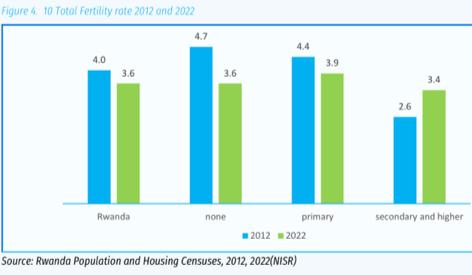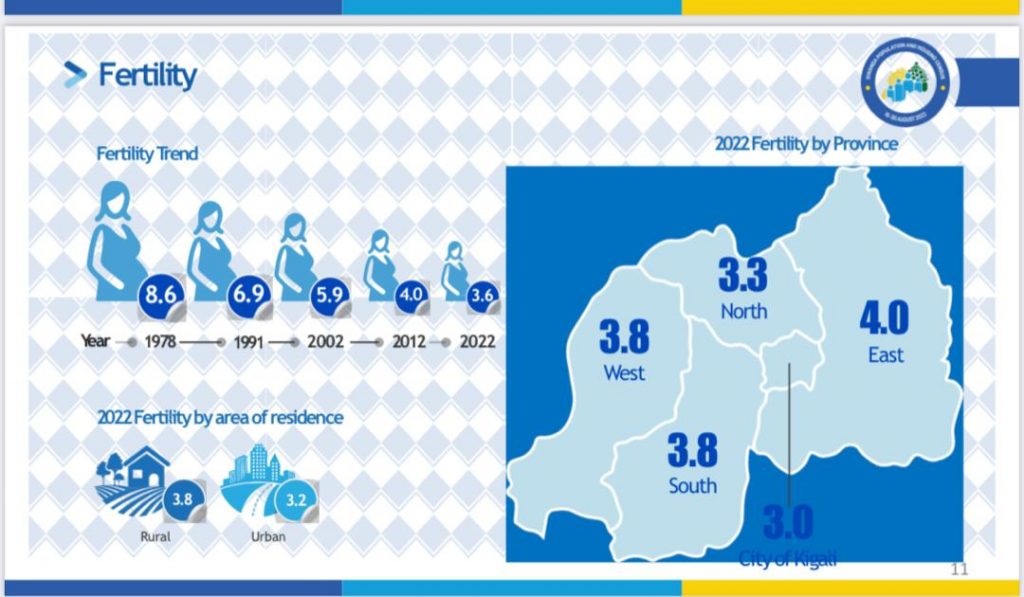5RPHC: Educational Impact on Rwandan Fertility
2 min read

A revolution is quietly unfolding in Rwanda, driven by the transformative power of education in reshaping not just individual destinies but the very fabric of fertility trends. The 2020 Rwanda Demographic and Health Survey (RDHS) offers a lens into this metamorphosis, revealing a compelling correlation between education levels and fertility rates.
During the 5th Rwanda Population and Housing Census (RPHC) dissemination ceremony, the spotlight shines on the southern province, where Governor Kayitesi Alice passionately discusses the reinforced campaign to advise women in their fertile age. She articulates the importance of empowering women to have children they can afford to educate and support, stressing that it is a personal responsibility rather than a government directive. In this vision, education becomes the cornerstone for shaping a future where every child is not just born but nurtured with care and opportunity.

NISR’s Director of Census, Habarugira Venant, lends statistical weight to the narrative, emphasizing the crucial role of keeping young girls in school. Speaking during the ceremony, he reveals a nuanced trend from the RDHS 2020 data – while fertility has been increasing among those with secondary or higher education, it remains stagnant for those with primary education, and continues to decline for women who have never been to school. Habarugira underscores the need for a comprehensive approach, advocating for education on Sexual and Reproductive Health and Rights (SRHR) to empower the youth in making informed choices.
Two young mothers, Uwera Jeanne and Muhorakeye Yvonne, add a poignant personal dimension. Uwera, at 24 and a mother of four, shares her journey of being married young due to limited opportunities in her village. She paints a vivid picture of shouldering the responsibility of caring for her younger siblings, highlighting the absence of means to return to school as a determinant factor in her life’s trajectory. The sentiment echoes in Muhorakeye’s words, a 20-year-old mother of two, who concurs that education could have offered a different path.

The tapestry of change is woven with stark statistics. In the 12 months preceding the census, Rwandan women welcomed 364,549 babies, equivalent to 41 births every hour. The Crude Birth Rate (CBR) stands at 27.8 births per thousand inhabitants per year, with a General Fertility Rate (GFR) of 105.5 births per thousand women aged 15-49 per year. The journey from a Standardized Birth Rate (SBR) of 54 in 1978 to 27.4 in 2022 is a testament to the changing dynamics, with fertility variations across provinces ranging from 22 in Kigali to 30 in the Eastern Province.
Education emerges not merely as a solution but as a beacon of hope, illuminating a path towards a Rwanda where fertility is not just a demographic statistic but a reflection of informed choices and empowered lives.
Mukantwari Magnifique